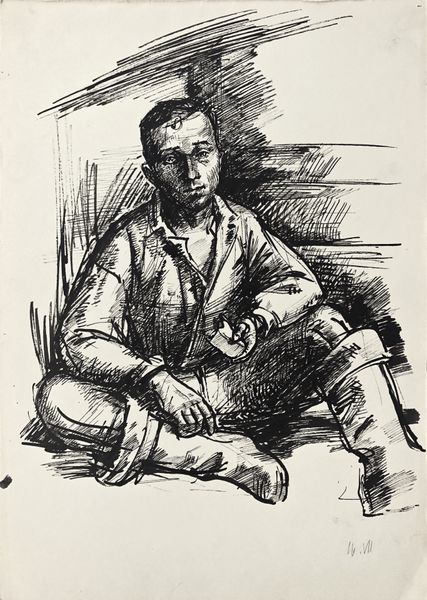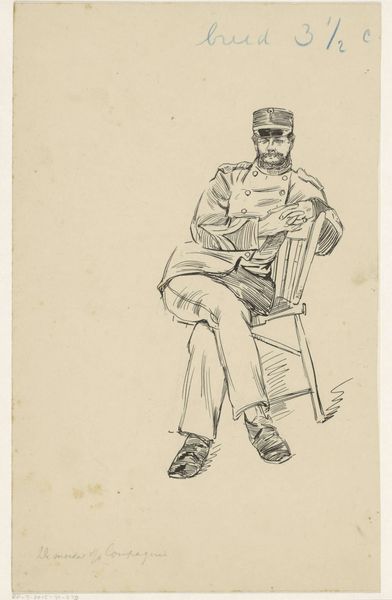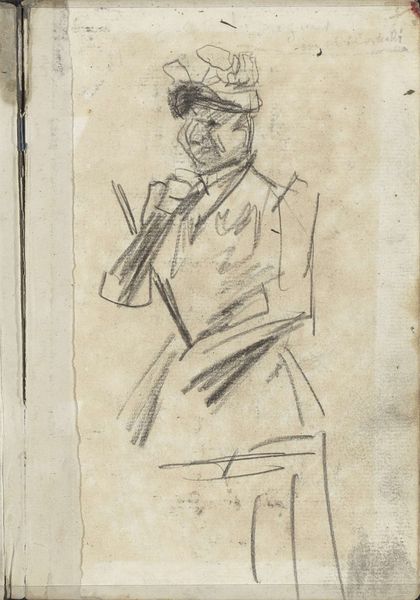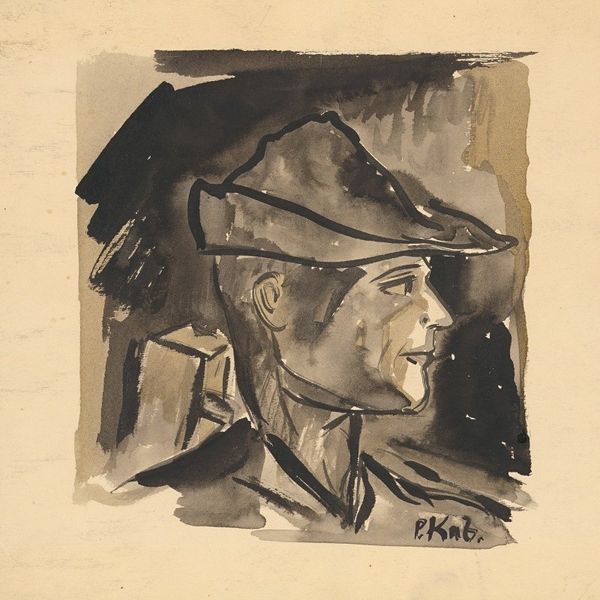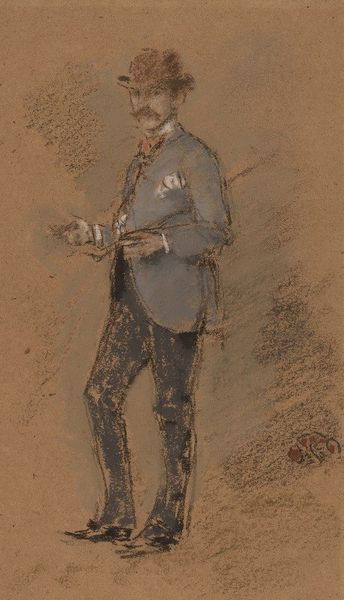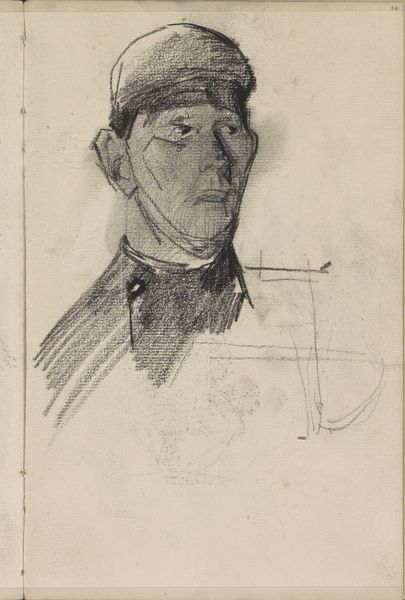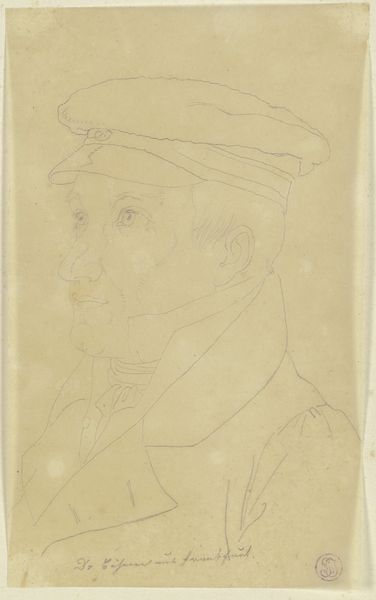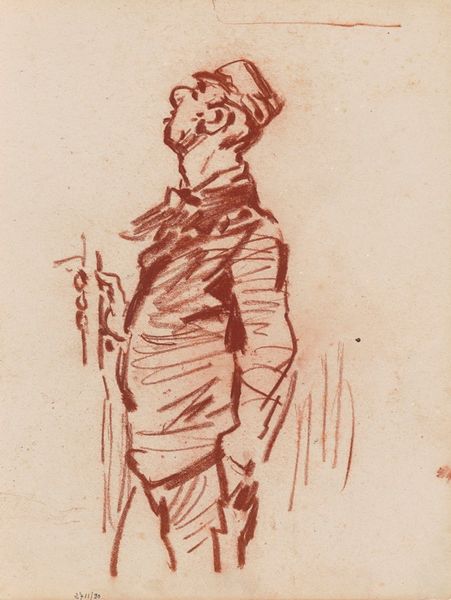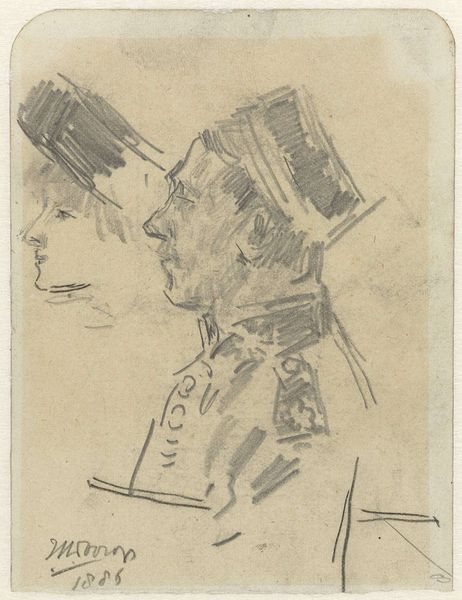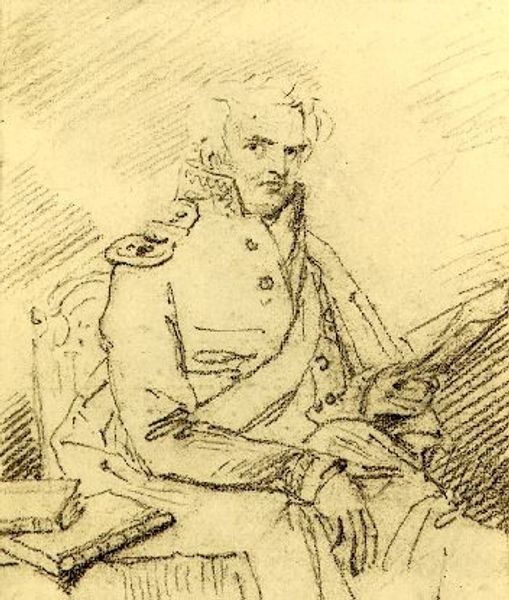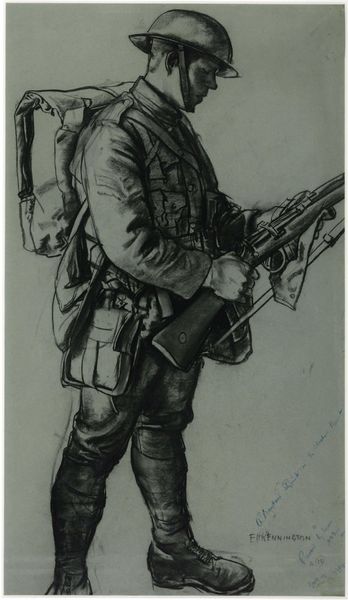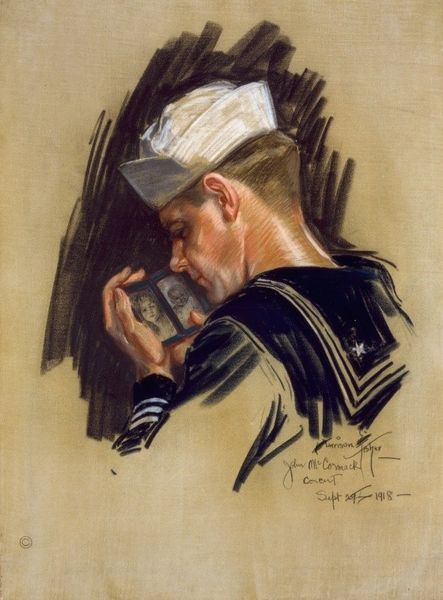
drawing, pencil
#
portrait
#
drawing
#
pencil sketch
#
charcoal drawing
#
figuration
#
pencil drawing
#
underpainting
#
pencil
#
portrait drawing
Dimensions: 42 x 32 cm
Copyright: Public domain US
Curator: This pencil drawing is entitled "Nikolaos Troupakis, Senior Commander," created in 1913 by Thalia Flora-Karavia. It presents a three-quarter view of a military figure against a stark background. The quickness of the work makes the overall scene feel somehow unresolved to me. Editor: There’s a certain immediacy to it, I agree. You can practically feel the artist’s hand at work. Look at the paper itself, its color and texture–almost like it was whatever was immediately available. I’m interested in the materiality, the simplicity of pencil on paper. Curator: Absolutely. Let's contextualize this a bit further. Flora-Karavia, a Greek artist, was capturing a powerful figure at a pivotal moment. The Balkan Wars were raging; there was an atmosphere charged with nationalism. How might this inform the subject of Nikolaos Troupakis and his representation? Editor: I see this in terms of production – what does it mean to rapidly sketch a commander during wartime? The use of such humble materials brings a down-to-earth humanity to what could be just another monumentalized portrait. It's the making, the quick marks, the access to the drawing, and what it evokes. It challenges hierarchies. Curator: Yes, and the “humble materials,” as you call them, contribute to an interesting tension. On the one hand, it's a study of a commander, representative of authority and order. Yet, the medium subverts any potential for grandiose presentation. This intersection becomes even more potent when one remembers the artist was a woman, navigating a deeply patriarchal society amidst war and conflict. What perspectives might she bring to depicting a man in power? Editor: A lot of meaning is interwoven in what at first seems simple. The drawing isn't detached or "high art;" it is utilitarian. This can be read, as you suggest, as a subversive act against traditional representations of power, through a conscious deployment of tools available to her within a specific economic and historical context. Curator: Reflecting on the social environment that informed Flora-Karavia's hand allows us a critical insight into the convergence of identity, war, and artistic representation in 1913 Greece. Editor: Indeed, this approach enables us to analyze not just the representation of Nikolaos Troupakis, but the artistic labour and means of its realization, grounding it in tangible elements.
Comments
No comments
Be the first to comment and join the conversation on the ultimate creative platform.
